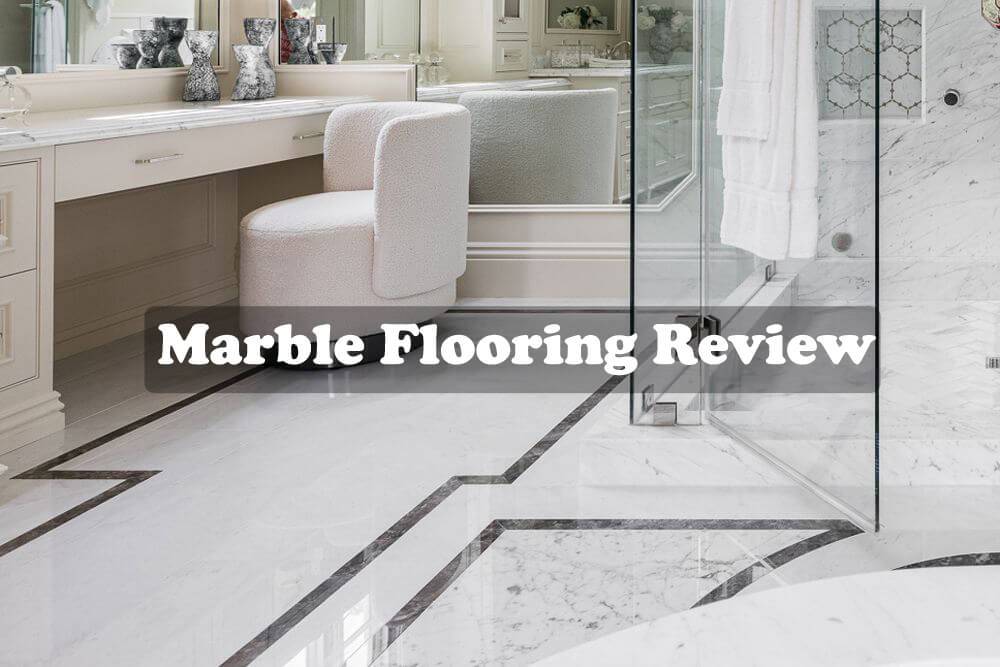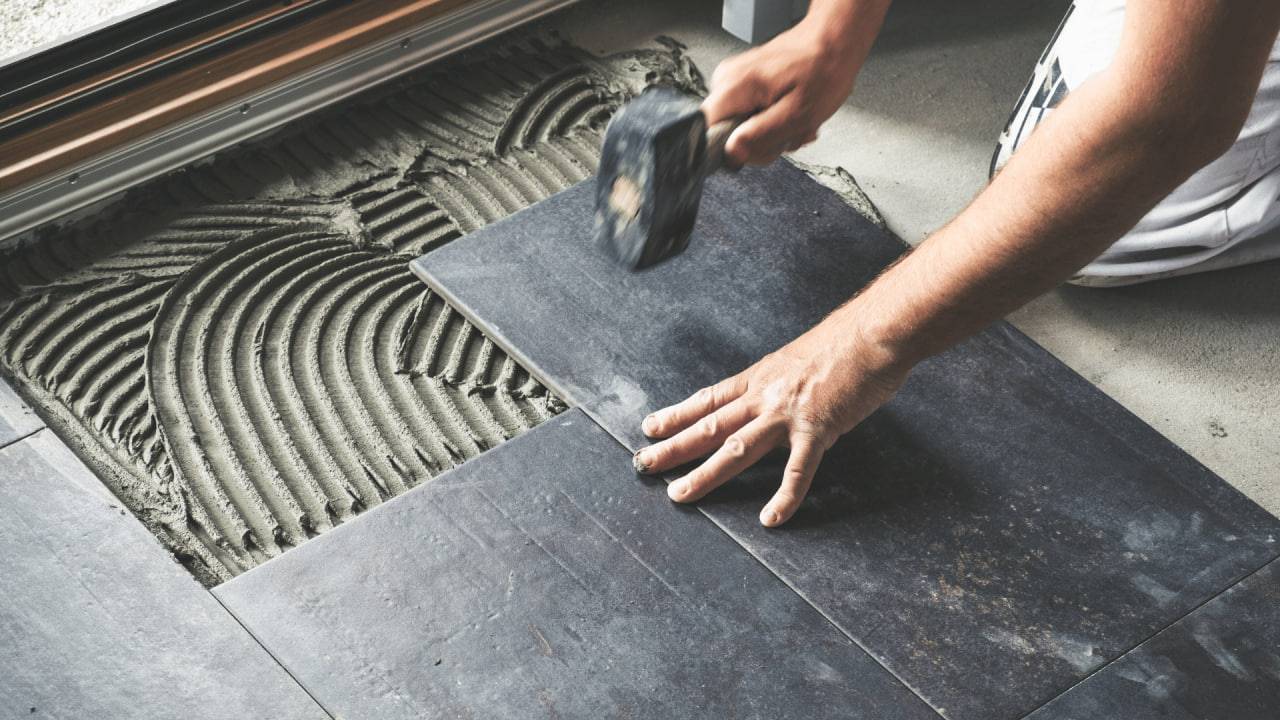For centuries, marble, born from the heart of mountains, has adorned the grandest spaces. Its timeless beauty, regal air, and luxurious feel have made it a favorite of royalty and design aficionados alike.
But is marble flooring the perfect fit for your home, or will it lead to more maintenance woes than wow-worthy moments? Let’s delve into the pros and cons to help you decide.
Marble Flooring Pros: A Touch of Timeless Elegance
- Unmatched Beauty: Marble’s natural veining and unique patterns create a one-of-a-kind masterpiece underfoot, adding instant elegance to any room.
- Durable Performer: Properly cared for, marble can withstand the test of time, lasting for generations.
- Cool and Collected: Marble’s naturally cool surface feels refreshing on hot days, making it ideal for warm climates.
- Radiant Ready: Easily pairs with radiant heating systems for added comfort in cooler months.
Marble Flooring Cons: Demanding Diva or Dependable Companion?
- High Maintenance: Requires regular sealing and specific cleaning methods to maintain its beauty and prevent staining.
- Scratch Prone: Susceptible to scratches and etching from everyday wear and tear, especially from pets or sharp objects.
- Slippery When Wet: Polished marble can become slippery, posing a safety hazard, especially for young children or older adults.
- Pricey Podium: Compared to other flooring options, marble can be significantly more expensive, both in material and installation costs.
Unveiling the Wonders of Marble: From Molten Magma to Veined Masterpiece
Marble, the captivating natural stone adorning buildings and homes, wasn’t always the beauty it is today. Its journey began deep within the Earth, not as fiery magma like granite, but as humble limestone, a layered rock formed from sediment. But immense heat and pressure worked their magic, transforming this ordinary stone into the extraordinary marble we know and love.
This metamorphic makeover gave marble its distinctive characteristics: stunning veins that swirl and dance across its surface, a hardness that allows it to be shaped into slabs and tiles, and a timeless elegance that has graced architecture for centuries.
Now, it’s easy to confuse marble with its equally stunning cousin, granite. But remember, granite boasts a fiery past, born from molten magma. This difference is reflected in their patterns: granite’s spotted or pebbly surface contrasts with marble’s mesmerizing veins, like rivers of color frozen in time.
So, the next time you admire a marble countertop or marvel at a veined floor, remember its incredible journey: from humble beginnings to a testament to the Earth’s transformative power.
Marble Maintenance: Keeping the Magic Alive
While your marble floor gleams like new, its beauty demands a touch more care than its ceramic tile counterpart. Here’s what you need to know:
- Cleanliness is Key: Regular sweeping and damp mopping (like you do with ceramic tile) are your friends. But remember, marble is porous – standing water is its enemy! It can seep in and leave unsightly stains. Mop carefully and dry promptly.
- Acid Alert: Marble has a slightly alkaline nature, so it reacts poorly to acidic foes like food, drinks, and cleaning products. These can cause permanent discoloration. To shield your floor, apply a penetrating sealer and a surface sealer after installation. Remember, reapplying the surface sealer annually is crucial for optimal protection.
- Soft Touch Required: Although it’s stone, marble has a delicate side. Scratches, scrapes, and chips happen easily, especially on polished surfaces where imperfections stand out. Unfortunately, these require replacing the damaged area – a more drastic solution.
Pro-Tip: Consider using doormats and coasters to minimize scratches and spills. By being mindful and taking proper precautions, you can ensure your marble floor continues to be a source of beauty and pride for years to come.
Design Delights: Where Marble Makes Magic
Marble isn’t just a floor, it’s a statement piece. Its inherent elegance instantly elevates any space, bestowing a regality that few materials can match. But beyond its timeless aura, marble boasts a surprising versatility:
- A Color Palette for Every Dream: From crisp whites to dramatic blacks, and even stunning multi-colored blends, marble offers a spectrum of hues to complement any design scheme. Unleash your inner artist and create a masterpiece underfoot!
- Uniqueness Unbound: No two marble tiles are identical. Each piece boasts its own personality, with natural veins and subtle color variations that tell a unique story. In multicolored marble, this individuality shines through, with each tile a vibrant masterpiece.
- Polished Perfection: Unlike other natural stones, marble can be polished to a breathtaking shine, transforming it into a silky smooth canvas reflecting light and adding an air of sophistication that elevates any space to glamorous heights.
- Mosaic Magic: Don’t be confined to rectangles! Marble tiles can be cut into various shapes and sizes, allowing you to create intricate mosaic installations that add a touch of playful artistry to your floor.
Transforming Your Space: Marble Flooring Installation
Marble flooring, with its timeless elegance and natural beauty, can elevate any space. But how does this magic happen? Let’s delve into the installation process:
Setting the Stage:
The journey begins with a sturdy foundation. A layer of cement board forms the base upon which the marble tiles will rest, ensuring a smooth and level surface.
Joining Forces:
Thin-set adhesive acts as the glue, meticulously bonding each tile to the base. While 12×12 inch tiles are popular, larger options like 16×16 and even 24×24 inch tiles cater to different design visions.
Filling the Gaps:
Once the adhesive dries, the gaps between the tiles are filled with cementitious grout, creating a seamless visual flow. Unlike ceramic tile, where only the grout lines require sealing, marble demands a more comprehensive approach.
Sealing the Deal:
Immediately after installation, and then annually thereafter, the entire marble surface receives a protective seal. This crucial step safeguards against stains and etching, preserving the marble’s inherent beauty.
DIY or Pro?
While the techniques resemble ceramic tile installation, venturing into DIY territory with marble can be challenging. Its weight and brittleness can lead to costly breakage for the unprepared. Additionally, specialized tools are needed for cutting and drilling this natural stone. Considering these factors, most opt for professional installation to ensure flawless results.
A Touch of Warmth:
One surprising advantage of marble is its excellent heat conductivity. This makes it an ideal partner for radiant heating systems, transforming the perceived coldness of marble into a delightful source of warmth, especially on chilly mornings.
Unveiling the Marble Menagerie: Exploring Top Flooring Options
While the brand may not always define the marble, understanding the different types available is crucial before stepping into the world of marble flooring. Here’s a glimpse into some of the most popular contenders:
- Carrara: The classic choice, quarried in Italy’s Carrara region. Imagine a grayish-white canvas adorned with soft, feathery gray veins. Its affordability makes it a common favorite for flooring applications.
- Calacatta: The epitome of luxury, thanks to its rarity and eye-catching beauty. This Italian stunner boasts bold, dark veins set against a bright white background, sometimes with mesmerizing gold accents.
- Statuario: Another Italian gem, sharing similarities with Carrara but with a twist. Its translucent white backdrop and dramatic veining exude a luxurious aura.
- Emperador: Hailing from Spain, this marble offers various shades of brown, each graced with unique, irregular veining.
- Crema Marfil: Another Spanish treasure, available in a captivating range of beige and yellowish tones, with varying vein intensity.
- Talathello: Embrace the subtle elegance of this Turkish marble, featuring a light grey base adorned with delicate silver or beige speckles.
- Levadia Black: A bold statement piece, this Greek marble showcases a striking black canvas accented with smoky light gray veins. While not commonly used for floors, it creates a dramatic impact.
Marble vs. Porcelain: Unveiling the Pros and Cons of Each
When it comes to flooring, both marble and porcelain offer unique advantages and drawbacks. Let’s delve into their differences to help you make an informed decision:
The Look: Marble’s Uniqueness vs. Porcelain’s Versatility
Marble captivates with its natural beauty and one-of-a-kind veining. Each tile is a masterpiece, creating a truly distinctive floor. However, porcelain, a modern marvel, can mimic various materials, including marble, with astonishing realism. While a skilled installer can achieve a close match, some may still discern the difference. Ultimately, the choice boils down to whether you crave genuine uniqueness or appreciate the flexibility and affordability of porcelain’s mimicry.
Price: Marble’s Exclusivity vs. Porcelain’s Accessibility
Marble’s beauty comes at a premium, with costs ranging significantly higher than porcelain tiles, typically priced between $5 and $10 per square foot. This price difference reflects the rarity and elegance of natural stone. If budget is a primary concern, porcelain offers a more accessible path to achieving a similar aesthetic.
Sustainability: Ethical Considerations
Some individuals prioritize ethical sourcing, and the large-scale quarrying of marble might raise concerns. Porcelain, produced using clay, offers an alternative for those seeking a more sustainable option.
Comfort and Maintenance: A Balancing Act
Polished marble’s smooth surface can be deceptively slippery, especially in water-prone areas like kitchens and bathrooms. Consider non-slip rugs or less polished options to ensure safety. Additionally, both marble and porcelain are notorious for feeling cold to the touch. However, they excel as bases for radiant heating systems, transforming them into luxurious sources of warmth.
Maintenance and Upkeep: Marble’s High Demands vs. Porcelain’s Relative Ease
Marble demands meticulous care. Regular sealing, specific cleaning methods, and immediate stain treatment are crucial to maintain its beauty. Porcelain, on the other hand, is generally low-maintenance, requiring standard cleaning practices.
Durability: Balancing Beauty and Resilience
While inherently strong, marble’s surface is susceptible to scratches and chips, especially under heavy traffic. Porcelain, though more scratch-resistant, can still crack under impact. For high-traffic areas, consider both materials’ durability limitations.
Choosing the Right Fit: It’s All About You
Ultimately, the perfect flooring choice depends on your priorities and lifestyle. If budget allows, and you crave the unmatched elegance and natural uniqueness of marble, be prepared to dedicate time and effort to its upkeep. If affordability, versatility, and low maintenance are key, porcelain presents a compelling alternative. Remember, there’s no one-size-fits-all answer – weigh the pros and cons carefully to find the solution that speaks to your heart and your home.




